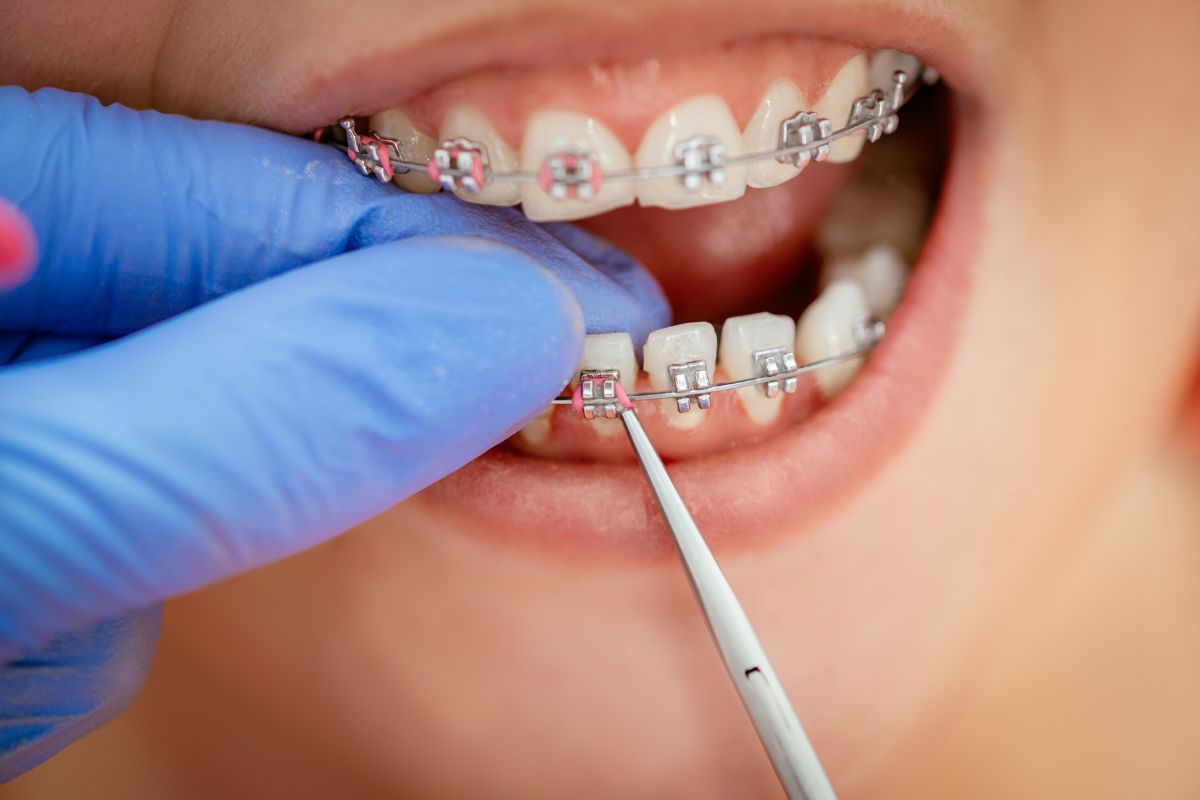Dental braces have long been a tried-and-true option for many people looking to achieve a straighter, healthier smile. But you might have several questions, such as how braces move teeth, how fast they do their job, what are the major components of braces, how their efficacy varies between children and adults – and so on. So, let’s take a look at some FAQs on braces.
How do braces move teeth?
Braces operate by providing constant pressure to your teeth over an extended time. This moderate but consistent push aids in gradually shifting the teeth into their targeted locations. Essentially, braces alter the bone and tissues surrounding the teeth, allowing them to adjust and realign themselves.
What are the different parts of braces, and how do they work?
Now, let’s look at the critical components of braces and how they help with this process.
- Brackets – These little, square-shaped attachments are connected to the front of each tooth using a specific dental glue. Brackets serve as grips for the archwire and help guide the movement of the teeth.
- Arch wires – The archwire runs between the brackets and is the primary source of force in braces. As the wire seeks to return to its former shape, it applies pressure on the teeth. This pressure causes them to align correctly.
- Springs – Springs are occasionally utilized to provide extra force to specific teeth or jaw locations, allowing for more sophisticated tooth movements.
- Rubber Bands – These elastic bands are commonly used to treat bite alignment problems by providing pressure to the upper and lower jaws.
- Other Appliances – In some circumstances, orthodontists may use other appliances, such as spacers, retainers, or headgear, to address particular dental issues and help with the entire treatment process.
How fast can braces move teeth?
The pace at which braces straighten teeth differs from person to person. The time of the straightening process is influenced by several factors, including the severity of the malocclusion, individual reaction to treatment, and adherence to orthodontic recommendations. While some individuals may show substantial changes in as little as a few months, others may take years of treatment. The average duration of orthodontic treatment with traditional braces is 18-24 months.
How do different braces work for children and adults?
Braces may be pretty beneficial for both children and adults; nevertheless, there are significant distinctions in treatment methods. Children’s growing jawbones and pliable oral tissues make them more responsive to orthodontic therapy.
Adults, on the other hand, may require additional operations such as jaw surgery or tooth extraction to attain the best outcomes. Your orthodontist takes these unique factors into account when developing a treatment plan customized to your age and dental needs.
How should you care for your braces?
Caring for your dental braces is critical to achieving excellent treatment results and maintaining healthy oral hygiene. Do the following to keep your treatment on track:-
- Avoid foods that might harm the braces, such as crunchy, hard, or sticky foods.
- Follow your orthodontist’s cleaning routine, and attend all adjustment sessions.
- Use an alcohol-free antibacterial mouthwash twice a day.
- Brush your teeth a minimum of twice a day with a toothbrush with soft bristles and fluoridated toothpaste.
- Floss between your teeth and around your braces once daily.
- Clean your clear aligners every day and store them properly when not in use.
Do braces move your teeth every day?
Yes, braces use moderate pressure to reposition your teeth into the proper position gradually. This procedure takes time, and your orthodontist adjusts the braces regularly to guarantee consistent improvement.
Do braces permanently straighten teeth?
Braces can efficiently straighten teeth. But keeping the results requires wearing a retainer once they are removed. This helps keep teeth from slipping back into their previous place.
What are the benefits of braces?
Dental braces can help straighten crooked teeth, correct misaligned bites, improve oral health, and enhance overall smile appearance. Furthermore, correctly aligned teeth can help to improve long-term oral hygiene and avoid dental problems.
Do braces hurt?
While you may experience some discomfort or soreness during and after adjustments, it is usually bearable. Over-the-counter pain medications and orthodontic wax can assist with any discomfort.
How can I maintain my results after braces?
Following your orthodontist’s instructions, wearing your retainer as advised, practicing proper oral hygiene, and visiting regular dental check-ups all contribute to maintaining your results after braces.
Why do I need to wear a retainer after getting braces?
A retainer is required to preserve the results obtained with braces. It helps to hold your teeth in their new positions while the surrounding bone and tissue get adjusted.
Your worries over orthodontic treatment may be resolved if you know the ins and outs of braces. This covered every aspect of braces, including how they operate and how beneficial they are for both adults and children. Consider that getting and keeping that self-assured, gorgeous smile depends on practicing proper oral care and adhering to your orthodontist’s recommendations. Therefore, accept the adventure of wearing braces, knowing that every modification is going to be worthwhile in the end.











